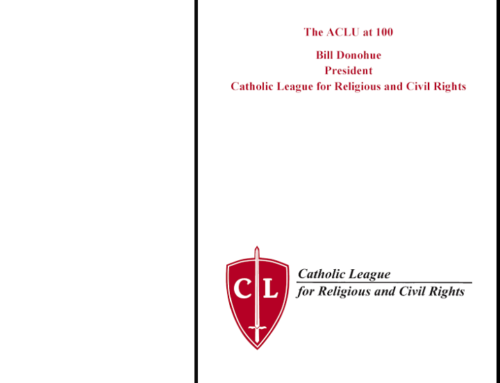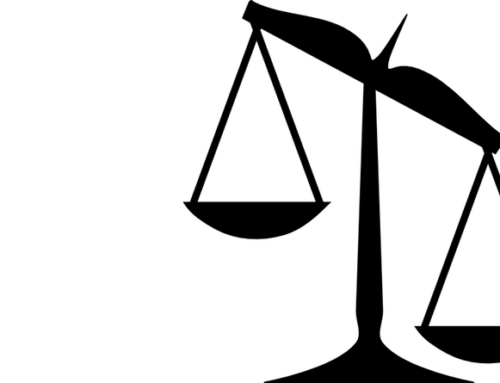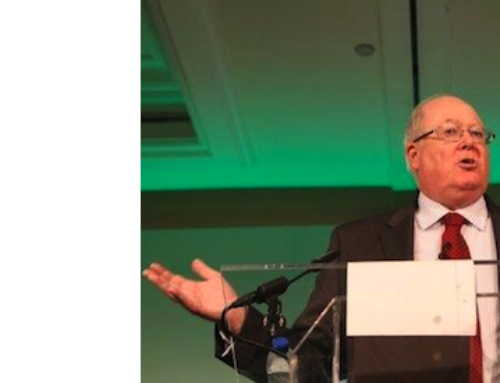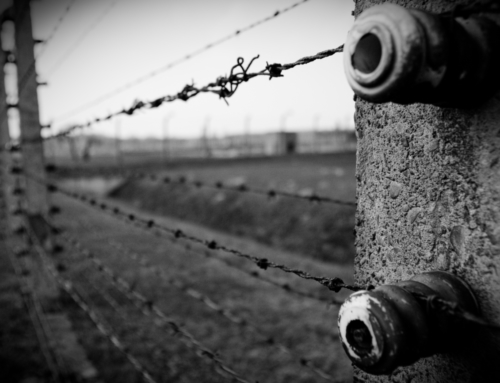Bill Donohue
The movie “Spotlight” is bound to spark more conversation about the sexual abuse scandal in the Catholic Church. Unfortunately, much of what the American public knows about this issue is derived from the popular culture, something this film will only abet. Therefore, the time is ripe to revisit what the actual data on this subject reveal.
When the Boston Globe sent the nation reeling in 2002 with revelations of priestly sexual abuse, and the attendant cover-up, Catholics were outraged by the level of betrayal. This certainly included the Catholic League. The scandal cannot be denied. What is being denied, however, is the existence of another scandal—the relentless effort to keep the abuse crisis alive, and the deliberate refusal to come to grips with its origins. Both scandals deserve our attention.
Myth: The Scandal Never Ended
When interviewed about the scandal in 2002 by the New York Times, I said, “I am not the church’s water boy. I am not here to defend the indefensible.” In the Catholic League’s 2002 Annual Report, I even defended the media. “The Boston Globe, the Boston Herald, and the New York Times covered the story with professionalism,” I wrote.
A decade later things had changed. In the Catholic League’s 2011 Annual Report, I offered a critical assessment of the media. “In a nutshell,” I said, “what changed was this: in 2011, unlike what happened in 2002, virtually all the stories were about accusations against priests dating back decades, sometimes as long as a half-century ago. Keep in mind that not only were most of the priests old and infirm, many were dead; thus, only one side of the story could be told. Adding to our anger was the fact that no other institution, religious or secular, was being targeted for old allegations.”
It became clear that by 2011 we were dealing with two scandals, not one. Scandal I was internal—the church-driven scandal. This was the result of indefensible decisions by the clergy: predatory priests and their enabling bishops. Scandal II was external, the result of indefensible cherry-picking of old cases by rapacious lawyers and vindictive victims’ groups. They were aided and abetted by activists, the media, and Hollywood.
Regarding Scandal II, more than cultural elites were involved. “In 2011,” I wrote, “it seemed as if ‘repressed memories’ surfaced with alacrity, but only among those who claimed they were abused by a priest. That there was no similar explosion of ‘repressed memories’ on the part of those who were molested by ministers, rabbis, teachers, psychologists, athletic coaches, and others, made us wonder what was going on.”
The steeple-chasing lawyers and professional victims’ organizations had a vested economic interest in keeping the scandal alive; the former made hundreds of millions and they, in turn, lavishly greased the latter. But it wasn’t money that motivated the media and Hollywood elites to keep the story alive—it was ideology.
To be specific, the Catholic Church has long been the bastion of traditional morality in American society, and if there is anything that the big media outlets and the Hollywood studios loathe, it is being told that they need to put a brake on their libido. So when the scandal came to light, the urge to pounce proved irresistible. The goal was, and still is, to attenuate the moral authority of the Catholic Church. It certainly wasn’t outrage over the sexual abuse of minors that stirred their interest: if that were the case, then many other institutions would have been put under the microscope. But none were.
There is no conspiracy here. What unfolded is the logical outcome of the ideological leanings of our cultural elites. Unfortunately, “Spotlight” will only add to Scandal II. How so? Just read what those connected with the film are saying.
Tom McCarthy, who co-wrote the script with Josh Singer, said, “I would love for Pope Francis and the cardinals and bishops and priests to see this [film].” Would it make any difference? “I remain pessimistic,” he says. “To be honest,” he declares, “I expect no reaction at all.”
Mark Ruffalo plays a reporter, and, like McCarthy, he says, “I hope the Vatican will use this movie to begin to right those wrongs.” (My italic.) He is not sanguine about the prospects. Indeed, he has given up on the Church.
The view that the Catholic Church has not even begun to “right those wrongs” is widely shared. Indeed, the impression given to the American people, by both the media and Hollywood—it is repeated nightly by TV talk-show hosts—is that the sexual abuse scandal in the Church never ended. Impressions count: In December 2012, a CBS News survey found that 55 percent of Catholics, and 73 percent of Americans overall, believe that priestly sexual abuse of minors remains a problem. Only 14 percent of Americans believe it is not a problem today.
Commentary by those associated with “Spotlight,” as well as movie reviewers and pundits, are feeding this impression. But the data show that the conventional wisdom is wrong. The fact of the matter is that the sexual abuse of minors by priests has long ceased to be an institutional problem. All of these parties—Catholics, the American public, the media, and Hollywood—entertain a view that is not supported by the evidence. “Spotlight” will only add to the propaganda.
In 2002, the United States Conference of Catholic Bishops (USCCB) commissioned researchers from the John Jay College of Criminal Justice to conduct a major study of priestly sexual abuse; it covered the years 1950 to 2002. It found that accusations of the sexual molestation of minors were made against 4,392 priests.
This figure represents 4 percent of all Catholic priests. What was not widely touted is that 43 percent of these allegations (1881) were unsubstantiated. To qualify as “unsubstantiated” the bar was set high: the allegation had to be “proven to be untruthful and fabricated” as a result of a criminal investigation.
In other words, roughly 2 percent of priests were likely guilty of molesting minors. Accusations proven to be false should carry no weight in assessing wrongdoing, yet the fabrications are treated by the media as if they were true. It must also be said that this rate of false accusations is much higher than found in studies of this problem in the general population.
More than half of the accused priests had only one allegation brought against them. Moreover, 3.5 percent accounted for 26 percent of all the victims. As computed by professor Philip Jenkins, an expert on this subject, the John Jay data reveal that “Out of 100,000 priests active in the U.S. in this half-century, a cadre of just 149 individuals—one priest out of every 750—accounted for a quarter of all allegations of clergy abuse.”
These data give the lie to the accusation that during this period the sexual molestation of minors by priests was rampant. It manifestly was not. Even more absurd is the accusation that the problem is still ongoing.
In the last ten years, from 2005 to 2014, an average 8.4 credible accusations were made against priests for molestation that occurred in any one of those years. The data are available online at the USCCB website (see the reports issued for these years). Considering that roughly 40,000 priests could have had a credible accusation made against them, this means that almost 100 percent of priests had no such accusation made against them!
Sadly, I cannot name a single media outlet, including Catholic ones, that even mentioned this, much less emphasized it. The Catholic News Service, paid for by the bishops, should have touted this, but it didn’t. This delinquency is what helps to feed the misperception that the Church has not even begun to deal with this problem.
In 2011, researchers from John Jay issued another report, “The Causes and Context of Sexual Abuse of Minors by Catholic Priests in the United States, 1950-2010.” While the document was often critical, it commended the Church for its forthrightness in dealing with this problem. “No other institution has undertaken a public study of sexual abuse,” the report said, “and as a result, there are no comparable data to those collected by the Catholic Church.” Looking at the most recent data, the report found that the “incidence of child sexual abuse has declined in both the Catholic Church and in society in general, though the rate of decline is greater in the Catholic Church in the same time period.”
So much for the myth that the Church has not yet “begun” to address this issue. Every study by the John Jay researchers shows that most of the abuse took place between 1965-1985. This is not hard to figure out: the sexual revolution began in the 1960s and fizzled out by the mid-1980s. Libertinism drove the sexual revolution, and it hit the seminaries as well, especially in the 1970s. Matters slowed once AIDS was uncovered in 1981. It took fear—the fear of death—to bring about a much needed reality check.
Myth: Celibacy is the Root Cause
On October 28, 2015, a columnist for the Boston Globe wrote an article about “Spotlight” titled, “Based on a True Story.” Similarly, script writer Tom McCarthy said, “We made a commitment to let the facts play.”
No one disputes the fact that predatory priests were allowed to run wild in the Boston Archdiocese; the problem was not confined to Boston, but it was the epicenter. That molesting priests were moved around like chess pieces to unsuspecting parishes is also true. Ditto for the cover-up orchestrated by some bishops. This is the very stuff of Scandal I. Where the factual claims dissolve, however, is when the script claims to know what triggered the scandal.
“Spotlight” made its premiere on September 3 at the Venice Film Festival. A review published by the international French news agency, AFP, noted that “in Spotlight’s nuanced script, few in the Catholic hierarchy have shown any inclination to address whether the enforced celibacy of priests might be one of the root causes of the problem.”
The celibacy myth was debunked by the John Jay 2011 report. “Celibacy has been constant in the Catholic Church since the eleventh century and could not account for the rise and subsequent decline in abuse cases from the 1960s through the 1980s.” But if celibacy did not drive the scandal, what did? The John Jay researchers cite the prevalence of sexually immature men who were allowed to enter the seminaries, as well as the effects of the sexual revolution.
There is much truth to this observation, but it is incomplete. Who were these sexually immature men? The popular view, one that is promoted by the movie as well, suggests they were pedophiles. The data, however, prove this to be wrong.
When the word got out that “Spotlight” was going to hit the big screen, Mike Fleming, Jr. got an Exclusive for Deadline Hollywood; his piece appeared on August 8, 2014. The headline boasted that it was a “Boston Priest Pedophile Pic.” In his first sentence, he described the film as “a drama that Tom McCarthy will direct about the Boston Globe investigation into pedophile priests.” This narrative is well entrenched in the media, and in the culture at large. Whenever this issue is discussed, it is pitched as a “pedophile” scandal. We can now add “Spotlight’s” contribution to this myth.
One of the most prominent journalists on the Boston Globe “Spotlight” team was Kevin Cullen. On February 28, 2004, he wrote a story assessing a report issued by the National Review Board, appointed by the USCCB, on what exactly happened. He quoted the head of the Board’s research committee, well-respected attorney Robert S. Bennett, as saying it was not pedophilia that drove the scandal. “There are no doubt many outstanding priests of a homosexual orientation who live chaste, celibate lives,” he said, “but any evaluation of the causes and context of the current crisis must be cognizant of the fact that more than 80 percent of the abuse at issue was of a homosexual nature.”
Bennett was correct, and Cullen knew it to be true as well. “Of the 10,667 reported victims [in the time period between 1950 and 2002],” Cullen wrote, “81 percent were male, the report said, and more than three-quarters [the exact figure is 78 percent] were postpubescent, meaning the abuse did not meet the clinical definition of pedophilia.” One of Bennett’s colleagues, Dr. Paul McHugh, former psychiatrist-in-chief at Johns Hopkins University, was more explicit. “This behavior was homosexual predation on American Catholic youth,” he said, “yet it is not being discussed.” It never is.
So it is indisputable that the Boston Globe “Spotlight” team knew that it was homosexuality, not pedophilia, that drove the scandal. Yet that is not what is being reported today. Indeed, as recently as November 1, 2015, a staff reporter for the Boston Globe said the movie was about “the pedophile priest crisis.” This flies in the face of the evidence. In fact, the John Jay 2011 report found that less than 5 percent of the abusive priests fit the diagnosis of pedophilia, thus concluding that “it is inaccurate to refer to abusers as ‘pedophile priests.'”
The evidence, however, doesn’t count. Politics counts. The mere suggestion that homosexual priests accounted for the lion’s share of the problem was met with cries of homophobia. This is at the heart of Scandal II. Even the John Jay researchers went on the defensive. Most outrageous was the voice of dissident, so-called progressive, Catholics: It was they who pushed for a relaxation of sexual mores in the seminaries, thus helping to create Scandal I. Then they helped to create Scandal II by refusing to take ownership of the problem they foisted; they blamed “sexual repression” for causing the crisis.
So how did the deniers get around the obvious? Cullen said that “most [of the molested] fell victim to ephebophiles, men who are sexually attracted to adolescent or postpubescent children.” But clinically speaking, ephebophilia is a waste-basket term of no scientific value.
Philip Jenkins once bought into this idea but eventually realized that the word “communicates nothing to most well-informed readers. These days I tend rather to speak of these acts as ‘homosexuality.'” Jenkins attributes his change of mind to Mary Eberstadt, one of the most courageous students of this issue. “When was the last time you heard the phrase ‘ephebophile’ applied to a heterosexual man?” In truth, ephebophilia is shorthand for homosexuals who prey on adolescents.
Even those who know better, such as the hierarchy of the Church, are reluctant to mention the devastating role that homosexual priests have played in molesting minors. In April 2002, the cardinals of the United States, along with the leadership of the USCCB and the heads of several offices of the Holy See, issued a Communiqué from the Vatican on this issue. “Attention was drawn to the fact that almost all the cases involved adolescents and therefore were not cases of true pedophilia” they said. So what were they? They were careful not to drop the dreaded “H” word.
Further proof that the problem is confined mostly to gay priests is provided by Father Michael Peterson, co-founder of St. Luke’s Institute, the premier treatment center in the nation for troubled priests. He frankly admits, “We don’t see heterosexual pedophiles at all.” This suggests that virtually all the priests who abused prepubescent children had a homosexual orientation.
The spin game is intellectually dishonest. When adult men have sex with postpubescent females, the predatory behavior is seen as heterosexual in nature. But when adult men have sex with postpubsecent males, the predatory behavior is not seen as homosexual in nature. This isn’t science at work—it’s politics, pure and simple.
I have said it many times before, and I will say it again: most gay priests are not molesters but most molesting priests have been gay. It gets tiresome, however, to trot this verity out every time I address this issue. That’s because it means nothing to elites in the dominant culture. Just whispering about the role gay priests have played in the sexual abuse scandal triggers howls of protest.
There is plenty of evidence that Hollywood has long been a haven for sexual predators, both straight and gay. The same is true of many religious and secular institutions throughout society. But there is little interest in the media and in Tinsel Town to profile them. They have identified the enemy and are quite content to keep pounding away.
There is no doubt that the Boston Globe “Spotlight” team deserved a Pulitzer Prize for exposing Scandal I. Regrettably, there will be no Pulitzer for exposing Scandal II.








